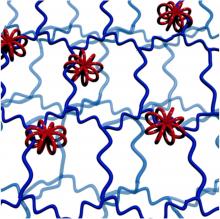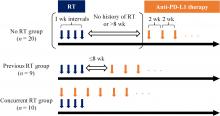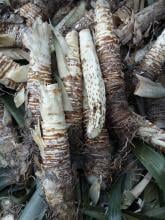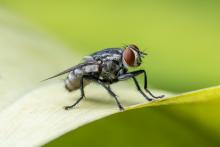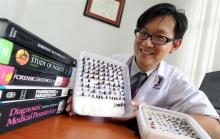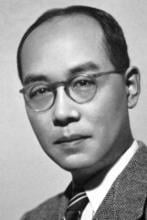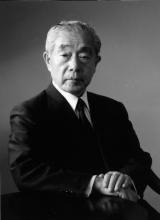Innovation
News
11 Aug 2023
A team of scientists from Thailand and Malaysia, led by principal investigator, Associate Professor Taweechai Amornsakchai from Mahidol University, has successfully developed a low-cost and green method to make films prepared from pineapple stem starch for food packaging, such as fruits and vegetable.
06 Aug 2023
A team of researchers from Newcastle University of Singapore and National University of Singapore, led by Mr Loh Tick Boon, with academic supervisors Dr JJ Chong and Dr Kheng Lim Goh, has developed a novel and practical method of assessing the mechanical properties of structures, with potential application to structural health monitoring of large structures such as bridges and viaducts in Singapore.
06 Aug 2023
A team of researchers from Singapore and the UK, led by Dr Wei Liang Lai, with supervisor, Associate Professor Kheng Lim Goh, has developed a portable device for repairing hard-to-see damage in carbon fiber materials. The device has great potential for the aerospace industry, such as to repair the fuselage of commercial aircraft.
03 Aug 2023
Dr. Zhang Yi, the lead scientist, and his team of researchers from Canada, Singapore, the UK, have successfully completed a study, comparing the efficiency of various bioreactors in producing Raspberry Ketone through Submerged Fermentation. This research marks the first time such a study has been conducted.
02 Aug 2023
Molecules that act as connected wheels can hold long molecular chains together to modify the properties of soft polymers.
31 Jul 2023
Enantioselection with neither chiral catalysis nor chiral ingredients (absolute enantioselection) has been one of the most active topics of interest but its experimental realizations have been challenging. A team led by researchers at the Institute for Molecular Science (IMS) demonstrated the enantioselectivity of helical supramolecules consisting only of achiral molecules solely by exploiting chiral-induced spin selectivity (CISS) effect. The helicity of the supramolecules is created not by microscopic molecular arrangements but by mesoscopically introduced dislocations. Now CISS effect has been revealed to be relevant for the wider class of chirality ranging from microscopic to mesoscopic length scales.
28 Jul 2023
Newcastle University (UK) and the Energy Research Institute at Nanyang Technological University hosted a UK-Singapore symposium funded by the UK Government in April 2023. It aimed to foster partnerships and research for widespread electric vehicle adoption. The event featured discussions on technology, economics, and policy over three days, encouraging joint collaboration in advanced electric transport research and commercialization.
26 Jul 2023
Researchers at Tohoku University have unraveled the reasons behind the underperformance of a promising field of catalysis known as dual atom catalysts (DACs). Their findings shed light on the challenges faced by DACs in converting carbon dioxide into valuable multicarbon products.
29 Jun 2023
New technological development has provided further clues about the origins of life on Earth. An international research group invented an innovative X-ray spectroscopy approach that enabled them to recreate the chemical reactions occurring in liquids at the femtosecond level (a quadrillionth part of a second). They used this to examine ureas—an organic compound that underwent ionization to form some of the building blocks of life.
23 Jun 2023
A combination of radiotherapy followed by immunotherapy is a promising strategy for the treatment of oral malignant melanomas in dogs.
22 Jun 2023
An international team of researchers from India and Singapore, led by Associate Professor Kheng Lim Goh from Newcastle University in Singpaore, has examined the impact of plastic waste management on creating a new type of clean-energy device, Tribo-electric nanogenerator. It compares recycling practices in Singapore and India, highlighting the importance of waste policies and infrastructure for successful recycling of plastics for making the clean-energy device. Challenges include contamination and decreased material quality with recycling.
19 Jun 2023
Finding lost-cost and efficient means of accelerating the oxygen evolution reaction could lead to the proliferation of water-splitting electrolyzes. Rather than adopting a time-consuming trial and error approach, an international research group has used theoretical predictions to identify and then successfully fabricate a new electrocatalyst.
18 Jun 2023
A team of researchers from universities in Thailand and Malaysia have collaborated to develop a unique kind of bioplastic sheet that is good for the environment and can decompose naturally. They made this bioplastic sheet using a byproduct of the bromelain industry which used the leftover pineapple stems from agricultural waste. This new type of bioplastic sheet has the potential to be used as single-use packaging material, as an alternative to the use of harmful plastic sheet, contributing to a more sustainable way of doing business and promoting a circular economy.
15 Jun 2023
An international research group has engineered a new energy-generating device by combining piezoelectric composites with carbon fiber-reinforced polymer (CFRP), a commonly used material that is both light and strong. The new device transforms vibrations from the surrounding environment into electricity, providing an efficient and reliable means for self-powered sensors.
09 Jun 2023
With the need for hardware to process large amounts of digital information ever growing, researchers are working hard to improve magnetoresistive devices. The magnetoresistance ratio indicates the efficiency of these devices, the higher the better. Most magnetoresistive devices comprise magnesium oxide and iron-based magnetic alloys. But a group of researchers from Tohoku University has unveiled a new material that also exhibits enormous magnetoresistance.
07 Jun 2023
Scientists from Thailand, France and Singapore have conducted groundbreaking research using both tiny cellulose nanofibers (CNF) and long pineapple leaf fibers (PALF) to create stronger materials. They added varying amounts of CNF to epoxy and found that 1% CNF greatly increased impact strength. PALF-epoxy composites showed significant flexibility and strength improvements. Combining CNF and PALF resulted in a remarkable increase in impact strength. The findings could revolutionize stronger material development.
02 Jun 2023
Researchers at Tohoku University and Tsinghua University have introduced a next-generation model membrane electrode that promises to revolutionize fundamental electrochemical research.
01 Jun 2023
Tests could soon identify patients who will respond well to the available treatment for chronic myeloid leukaemia and those who will be resistant to it—which could improve their chances of survival.
25 May 2023
A group of researchers from universities in Thailand and Malaysia have collaborated to develop a unique kind of film that is good for the environment and can decompose naturally. They made this film using leftover pineapple stems, which helps reduce the use of harmful plastic films. This new film has the potential to be used as packaging material, contributing to a more sustainable way of doing business and promoting a circular economy.
18 May 2023
Prioritising climate change, ITEX is encouraging inventors to push the boundaries of creativity and innovation to drive new climate technology
11 May 2023
- MOU and seminar held on April 26 (Wed) at the Graduate School of Engineering Practice, Seoul National University
09 May 2023
Zinc-air batteries may power the future thanks to their high density, low cost, and nature-friendly makeup. Yet, their low voltage has stymied their widespread application. Now, a research group has realized a zinc-air battery with an open circuit voltage of over 2 V.
10 Apr 2023
Doctors at King Chulalongkorn Memorial Hospital have developed lightweight and easy-to-use Parkinson's gloves that can automatically reduce tremors, allowing patients to enjoy social life and reducing side effects from medication and risk from brain surgery.
06 Apr 2023
The 2022 Asian Universities Student Entrepreneurship Ideation Challenge (AUSEIC) has concluded successfully with an online final pitch and award presentation. Start-up Bridge Neuro, founded by Victor Wong, a Year-3 student on the Doctor of Education Programme at EdUHK won the competition, in a field of 30 teams overall.
29 Mar 2023
An international team of scientists is helping to reduce carbon emissions into the atmosphere by exploring different natural fibres and blending the natural fibres in plastics to make light-weight and strong green composite materials for the construction and automotive industries.
24 Mar 2023
Scientists in Singapore converted fruit waste into a solar absorber called Mxene to develop an efficient and sustainable water desalination process.
23 Mar 2023
Fujitsu and Osaka University’s Center for Quantum Information and Quantum Biology (QIQB) today revealed the development of a new, highly efficient analog rotation quantum computing architecture, representing a significant milestone toward the realization of practical quantum computing. The new architecture reduces the number of physical qubits required for quantum error correction – a prerequisite for the realization of fault-tolerant quantum computing – by 90% from 1 million to 10,000 qubits. This breakthrough will allow research to embark on the construction of a quantum computer with 10,000 physical qubits and 64 logical qubits (4), which corresponds to computing performance of approximately 100,000 times that of the peak performance of conventional high performance computers.
20 Mar 2023
Scientists from Alliance University, Bangalore, Birla Institute of Technology Mesra, Inha University, Hanyang University, South Korea, and Newcastle University in Singapore have developed a new and straightforward approach to turn used COVID-19 facemasks into potential absorbent materials that can be employed for carbon capture from atmosphere.
19 Mar 2023
An international interdisciplinary team of researchers hailed from India, Malaysia, Singapore and Thailand has successfully developed a method of using chitosan from terrestrial insects to manufacture eco‐friendly polymer composite parts using the 3D printing method.
16 Mar 2023
Annual innovation event brings together global innovators, entrepreneurs, researchers and scientists, and experts from various fields and industries to showcase their latest innovations, share ideas, and collaborate with industries to develop better technologies and solutions to shape our future. This is also a platform for innovators to meet potential investors and partners.
Events
Sorry, no events coming up for this topic.
Researchers
Nanyang Technological University
Dr. Sravya Tekumalla is currently a Principal Investigator in Nanyang Technological University, Singapore, where she works as a Presidential Postdoctoral Fellow. In addition, she also leads a small team of staff and students working in the domain of metal additive manufacturing (commonly known as 3D printing).
Hira Khalid is an associate professor at the Department of Chemistry of Forman Christian College University, Lahore, Pakistan.
Universiti Teknologi MARA (UiTM)
Dr Heo is currently a senior lecturer at the Department of Microbiology and Parasitology, Faculty of Medicine, Universiti Teknologi MARA, Malaysia.
De La Salle University
Michael Angelo B. Promentilla is a Professor of Chemical Engineering and the head of the Waste and Resource Management Unit of the Center for Engineering and Sustainable Development Research (CESDR) at De La Salle University (DLSU).
Hokkaido University
Manabu Tokeshi is a Professor at the Division of Applied Chemistry at Hokkaido University.
The Chinese University of Hong Kong (CUHK)
Li Zhang is an Associate Professor in the Department of Mechanical and Automation Engineering (MAE) and an associate faculty member in Chow Yuk Ho Technology Centre for Innovative Medicine (TIM) and T Stone Robotics Institute (CURI) at The Chinese University of Hong Kong (CUHK). He is also the co-director of CAS SIAT-CUHK Joint Laboratory of Robotics and Intelligent Systems.
- « first
- ‹ previous
- 1
- 2
- 3
Giants in history
Physicist and statistician Prasanta Chandra Mahalanobis (29 June 1893– 28 June 1972), who founded the Indian Statistical Institute in 1931, is known for his pioneering application of statistics to practical problems.
Tetsuya Theodore Fujita (23 October 1920 – 19 November 1998) was a Japanese-American meteorologist who created the Fujita scale that classifies the strength of tornadoes based on damage to structures and vegetation.
In 1915, pathologist Katsusaburo Yamagiwa and his research assistant Koichi Ichikawa became the first to prove that chronic exposure to chemicals can cause cancer.
In 1915, Koichi Ichikawa along with pathologist Katsusaburo Yamagiwa became the first to prove that chronic exposure to chemicals can cause cancer.
A pioneer of bio-organic chemistry, Darshan Ranganathan (4 June 1941 – 4 June 2001) is remembered for developing a protocol for synthesising imidazole, a compound used to make antifungal drugs and antibiotics. Widely considered India’s most prolific researcher in chemistry, she also published dozens of papers in renowned journals on protein folding, molecular design, chemical simulation of key biological processes, and the synthesis of functional hybrid peptides and nanotubes.
In his over 30 year career in rice research, Munshi Siddique Ahmad (1924 – 19 October 2011) developed more than 30 varieties of high-yielding rice, including the BRRI Shail strain, which was responsible for increasing the rice production of Bangladesh from 8 million tonnes in 1965 to 20 million tonnes in 1975.
Hideki Yukawa (23 January 1907 – 8 September 1981) was awarded the Nobel Prize in Physics in 1949 for predicting the existence of the pi meson subatomic particle. Japan’s first Nobel laureate, Yakawa also expressed his support for nuclear disarmament by signing the Russell–Einstein Manifesto in 1955.
Ground-breaking cancer researcher Kamal Jayasing Ranadive (8 November 1917 – 11 April 2001) advanced the understanding of the causes of leukaemia, breast cancer and oesophageal cancer through the use of animal models. She was also among the first to recognise how susceptibility to cancer is linked to tumour-causing interactions between hormones and viruses.
Birbal Sahni (14 November 1891 – 10 April 1949), a pioneer of Indian palaeobotanical research, and founder of what is now the Birbal Sahni Institute of Palaeosciences in Lucknow, made multiple contributions to the study of prehistoric plants. These include the discovery of a new group of fossil gymnosperms (named Pentoxylae), reconstruction of the extinct Williamsonia sewardiana plant, and description of a new type of petrified wood from the Jurassic age.
The research of Filipino pharmaceutical chemist Luz Oliveros-Belardo (3 November 1906 – 12 December 1999) focussed on essential oils and other chemicals derived from native Philippine plants.
Japanese chemist Kenichi Fukui (4 October 1918 – 9 January 1998) was the first Asian scientist to be awarded the Nobel Prize in Chemistry. Together with Roald Hoffman, he received this honour in 1981 for his independent research into the mechanisms of chemical reactions.
Filipina chemist María Orosa (29 November 1892–13 February 1945) fought malnutrition and food insecurity in the Philippines by devising over 700 culinary creations including Soyalac, a nutrient rich drink made from soybeans, and Darak, rice cookies packed with Vitamin B1, which could prevent beriberi disease caused by Vitamin B1 deficiency. She was also a partisan of the guerrilla movement resisting Japanese occupation during World War II, and died after being struck by shrapnel while working in her laboratory during the Battle of Manila.
Research by Filipino plant scientist Benito Vergara (23 June 1934 – 24 October 2015) on the physiology of rice led to the development of deep-water and cold-tolerant rice varieties. Vergara also made several contributions to expanding public awareness of rice science.
Filipino chemist and pharmacist Manuel A. Zamora (29 March 1870 – 9 July 1929) is best remembered for his discovery of the tiki-tiki formula to combat beriberi, a disease caused by Vitamin B1 deficiency.
In 1939, biochemist Kamala Sohonie (18 June 1911 – 28 June 1998) became the first woman to be accepted into the Indian Institute of Science (IISc).
Korean parasitologist Seung-Yull Cho (16 November 1943 – 27 January 2019) is remembered largely for his pioneering works to control infections caused by helminthic parasites and his contribution to journal publishing.
Chinese agronomist Yuan Longping (7 September 1930 – 22 May 2021) developed the first varieties of the high-yield, hybrid rice that brought food security to multiple countries including China, which had been ravaged by food shortages as recently as the mid-20th century.
Fe Villanueva del Mundo (27 November 1911 – 6 August 2011) was a Filipina paediatrician who founded the Philippines’ first paediatric hospital.
After witnessing death and suffering as a youth in his home village during World War II, Nguyễn Tài Thu (6 April 1931 – 14 February 2021) set his sights on alleviating pain by becoming a doctor. After studying Traditional Chinese Medicine in China in the 1950s, Thu returned to Vietnam to serve in military hospitals. Eventually, he became the country’s foremost practitioner of acupuncture, a technique he first learned by inserting needles into himself.
Minoru Shirota (April 23, 1899 – March 10, 1982) was a Japanese microbiologist who invented the popular fermented drink Yakult.
Wu Lien-teh (10 March 1879 – 21 January 1960) was a Malaysian-born doctor who invented a mask that effectively suppressed disease transmission. Winning the prestigious Queen’s Scholarship enabled Wu to become the first Chinese student to study medicine at the University of Cambridge.
Physicist Narinder Singh Kapany (31 October 1926 – 4 December 2020) pioneered the use of optical fibres to transmit images, and founded several optical technology companies. Born in Punjab, India, he worked at a local optical instruments factory before moving to London for PhD studies at Imperial College. There, he devised a flexible fibrescope to convey images along bundles of glass fibres.
Japanese physicist Ukichiro Nakaya (1900-1962) made the world’s first artificial snowflakes. He started his research on snow crystals in the early 1930s at Hokkaido University, where there is an unlimited supply of natural snow in winter. By taking over 3,000 photographs, he established a classification of natural snow crystals and described their relationship with weather conditions.
David T. Wong (born 1936) is a Hong Kong-born American neuroscientist who is best known for discovering the antidepressant drug fluoxetine, better known as Prozac.
The techniques that make industrial pearl culturing possible were developed over a century ago at the Misaki Marine Biological Station in Japan. The station’s first director, Professor Kakichi Mitsukuri, emphasized to Kokichi Mikimoto in 1890 that stimulating pearl sac formation was important for pearl growth, and they went on to successfully develop methods for culturing pearls.
The field of solid-state ionics originated in Europe, but Takehiko Takahashi of Nagoya University in Japan was the first to coin the term ‘solid ionics’ in 1967. ‘Solid-state ionics’ first appeared in 1971 in another of his papers, and was likely a play on ‘solid-state electronics’, another rapidly growing field at the time.
Charles Kuen Kao (Nov. 4, 1933 to Sept. 23, 2018) was an engineer who is regarded as the father of fibre optics. His work in the 1960s on long distance signal transmission using very pure glass fibres revolutionized telecommunications, enabling innovations such as the Internet.
Cyril Andrew Ponnamperuma (16 October 1923 – 20 December 1994) was a Sri Lankan chemist who was interested in the origins of life on Earth. His research in chemical evolution showed how inanimate molecules may have given rise to the building blocks of life – a process known as abiogenesis.
Motoo Kimura (13 November 1924 – 13 November 1994) was a Japanese theoretical population geneticist who is best remembered for developing the neutral theory of molecular evolution.
Meghnad Saha (6 October 1893 – 16 February 1956) was an Indian astrophysicist best known for formulating the Saha ionization equation which describes the chemical and physical properties of stars.
Sir Jagadish Chandra Bose (30 November 1858 – 23 November 1937) was a scientist and inventor who contributed to a wide range of scientific fields such as physics, botany and biology.
Osamu Shimomura (27 August 1928 – 19 October 2018) was a Japanese organic chemist and marine biologist who dedicated his career to understanding how organisms emitted light.
Woo Jang-choon (8 April 1898 – 10 August 1959) was a Korean-Japanese agricultural scientist and botanist.
Subrahmanyan Chandrasekhar (19 October 1910 – 21 August 1995) was an Indian astrophysicist who studied the structure and evolution of stars.
Mathematician Maryam Mirzakhani (12 May 1977 – 14 July 2017) was the first and only woman and Iranian to date to win the Fields Medal in 2014 for her work on curved surfaces.
Sir Chandrasekhara Venkata Raman (7 November 1888 – 21 November 1970) was an Indian physicist who performed ground-breaking research in the field of light-scattering.
Mohammad Abdus Salam (29 January 1926 – 21 November 1996) was a theoretical physicist and the first Pakistani to receive a Nobel Prize in science.
Srinivasa Ramanujan (22 December 1887 – 26 April 1920) was a math prodigy and widely considered one of India’s greatest mathematicians. Despite having almost no formal training in mathematics, he made substantial contributions to mathematical analysis, number theory, infinite series and continued fractions.
Gopalasamudram Narayanan Ramachandran (8 October 1922 – 7 April 2001) is best known for developing the Ramachandran plot to understand the structure of short chains of amino acids, known as peptides.
Bacharuddin Jusuf Habibie (25 June 1936 – 11 September 2019) was an Indonesian engineer who was President of Indonesia from 1998 to 1999.
Abdus Suttar Khan (c. 1941 – 31 January 2008) was a Bangladeshi engineer who spent a significant part of his career conducting aerospace research with NASA, United Technology and Alstom.
Chien-Shiung Wu (31 May 1912 – 16 February 1997) was an experimental physicist who made several important contributions to nuclear physics. Wu worked on the Manhattan Project – a top-secret program for the production of nuclear weapons during World War II and helped to develop a process for separating uranium into U235 and U238.
Julian Arca Banzon (13 March 1908 – 13 September 1988) was a biochemist from the Philippines who was a pioneer in alternative fuel research. Banzon investigated the use of indigenous crops as sources of renewable fuels and chemicals.
Rajeshwari Chatterjee (24 January 1922 – 3 September 2010) was the first female engineer from Karnataka in India.
Fazlur Rahman Khan (3 April 1929 – 27 March 1982) was a Bangladeshi-American structural engineer and architect who invented the tube principle, which formed the basis for modern skyscraper design.






